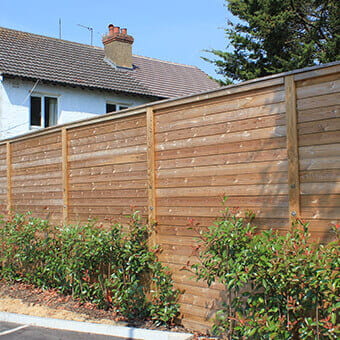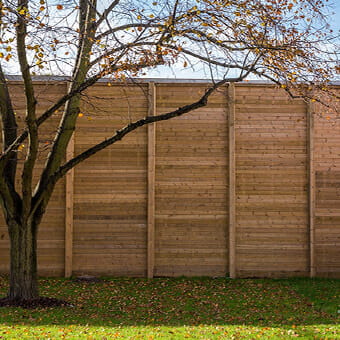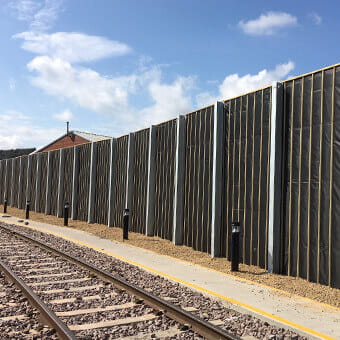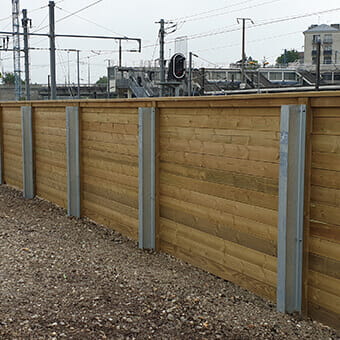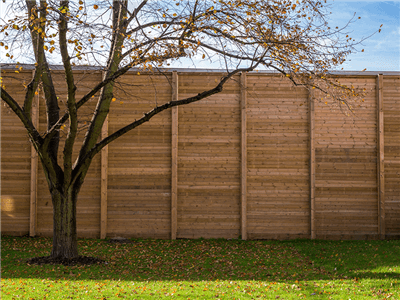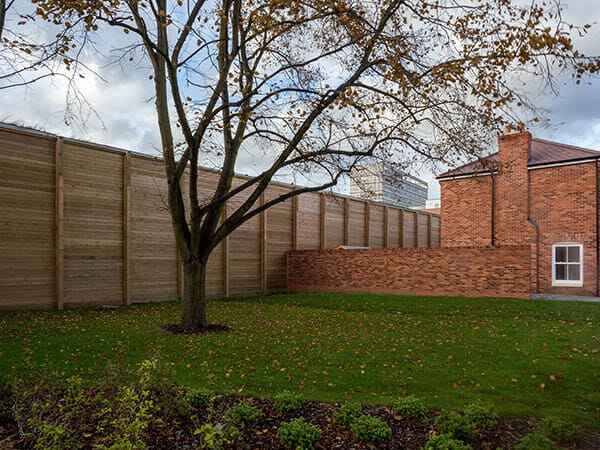Our other sites:
Acoustic barriers are the ideal solution for an ever-busier world; protecting against the impact of noise pollution across a wide variety of applications. As a threat to human health, noise pollution should never be underestimated, with proven links to chronic stress, hearing damage, hypertension, diabetes and even heart problems.
Essential for busy cities and urban areas, these barriers are specifically designed to mitigate unwanted sounds, with quality solutions being able to reduce noise pollution by up to 32 decibels. However, sites will never fully benefit from an acoustic fence and its effects if installed improperly, which unfortunately is all too common throughout the industry.
Here are the top five frequent mistakes that are made when installing acoustic barriers.
1. Leaving gaps between or under boards
The acoustic barrier should be flush to or dug into the ground to minimise gaps which sound can travel through. Boards should interlock to eliminate gaps, so noise reflects away from the surface or is absorbed. Acoustic fences from Jacksons Fencing have a unique interlocking V board design.
2. Not high enough
Noise reflects off the flat plane or absorbs into a fibrous layer, causing sound waves to bounce off and travel in different directions or being diffused. If the fence is too low in comparison to the noise source, then sound waves will simply travel over the fence. A sound consultant will suggest the best height for your site. Additionally, the fence should be installed as close to the noise source as possible.
3. Using the wrong type for different applications
Rely on experts when installing a noise reduction solution. Always employ a sound consultant for an expert opinion on whether you need absorptive or reflective acoustic fencing, as they provide different ways of mitigating noise.
4. Not choosing treated timber with a long guarantee
Acoustic fences can be costly and the decision-making process is likely to be lengthy, from awareness of the noise disruption, to research into the different solutions. The product you choose should be seen as a long-term investment; this means it should be free from rot and not fall into disrepair years down the line.
5. Not using the correct posts for the height
Timber posts should be supported using steel spur posts up to 3 metres, and steel I beams should be used for any height above this to provide strength and durability. Additionally, applications for road noise should be UKCA-marked as a whole system.
All acoustic barriers from Jacksons Fencing are guaranteed for 25 years. For more advice on specifying and installing a high-quality acoustic fence, contact us today.
Related products
Jacksons Security has a range of products relating to this article, all complete with our 25 year service life guarantee. If you cannot find the item you are looking for, please do not hesitate to call our friendly sales team.
Related Content
Top
